Community and Creativity Bloom at the Kempner Institute’s 2nd Annual Spring into Science Event
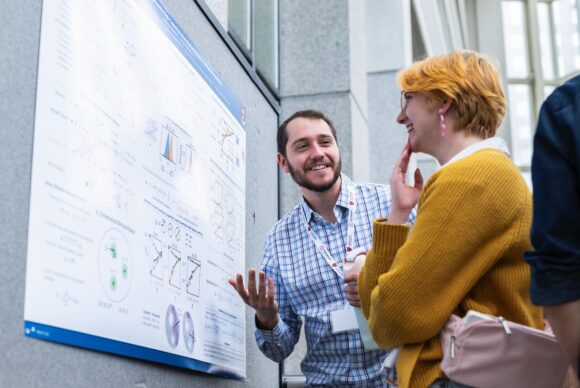
The Kempner's second annual Spring into Science event drew attendees from across the Kempner community and showcased the breath and depth of the institute's scientific innovation.
Photo credit: Anna Olivella
BOSTON, MA– The Kempner Institute’s second annual Spring into Science event, held on March 26 at Loft on Two in downtown Boston, drew attendees from across the Kempner community, showcasing the institute’s vitality and scientific innovation. The event showcased a wide array of research projects representing the breadth and depth of cutting-edge research at the Kempner. Talks, roundtable discussions and poster presentations served as focal points for intellectual engagement and community-building.
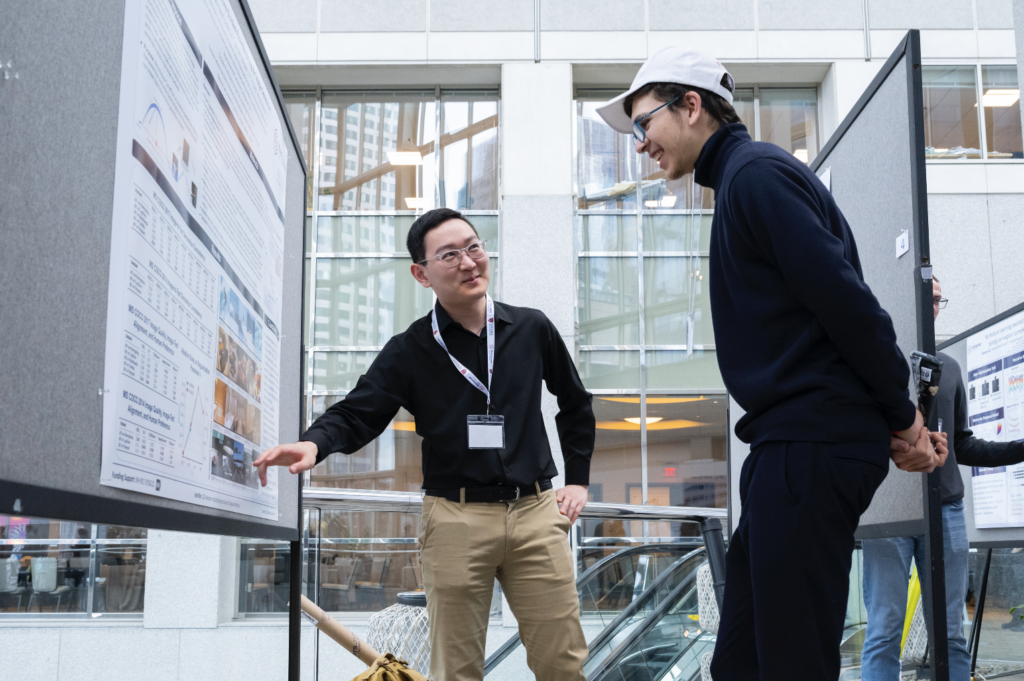
The full day event offered the Kempner’s faculty, fellows and students an opportunity to connect, collaborate and share research while also celebrating the institute’s growth and accomplishments. Assembled around round tables in a high-ceilinged conference room, participants heard welcome remarks by Kempner Co-Director Sham Kakade followed by Executive Director Elise Porter.
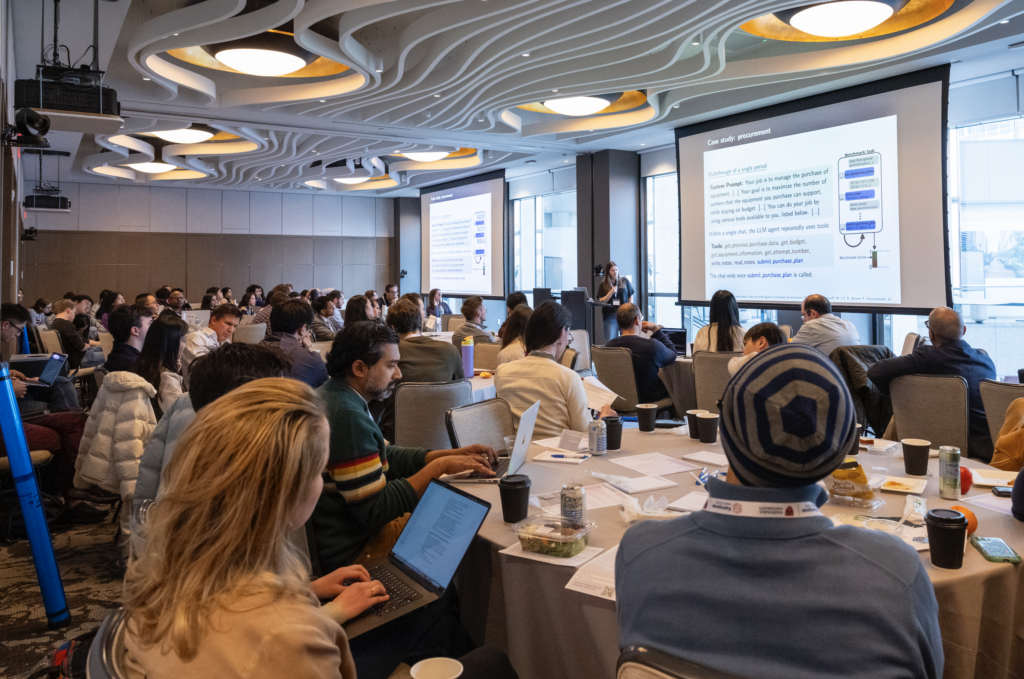
Porter described the rapid growth of the community since its founding in 2022, celebrating the more than 400 students, scientists, and affiliates who now comprise the Kempner’s burgeoning and dynamic community.
The day was an opportunity to see and celebrate the Kempner’s scientific landscape, and over the course of the day, community members gave talks about their recent work, highlighting the Kempner’s emerging science in real time. Key presentations and takeaways included:
- Kempner Research Fellow Binxu Wang described her work on the mathematics underlying diffusion models, which offers insights into how such models are able to generate realistic data.
- Kempner Graduate Fellow Ann Huang presented work on solution degeneracy in recurrent neural networks, which refers to the observations that such networks can often find very different ways to solve the exact same problem.
- Kempner Research Fellow Anderson Keller described work that grew out of a late night side-project, demonstrating how neural networks can be equipped with a physics-inspired property called equivariance, potentially enabling more robust performance in pattern recognition and other applications.
- M Ganesh Kumar, a postdoctoral fellow in Kempner associate faculty member Cengiz Pehlevan’s lab, then showed how anatomically-grounded yet simple neural network modeling can make testable predictions about place cell data, shedding light on underlying neural mechanisms.
- Kempner Graduate Fellows Rosie Zhao and Alexandru Meterez described their work on how reinforcement learning amplifies the behaviors of neural networks acquired during the pre-training stage.
- Kempner Graduate Fellow Sara Fish described work on how to test the ability of LLMs to make economic decisions.
In addition to presentations, attendees spent time collaborating and sharing ideas in breakout discussion groups over lunch, each diving into a different topic related to research. Topics included the relationship between natural and AI models, the opportunities and challenges of multi-agent learning, and also the use of LLMs to assist with research. (The latter quickly led to the emergence of a new Slack channel devoted to the subject for continued discussion and collaboration!).
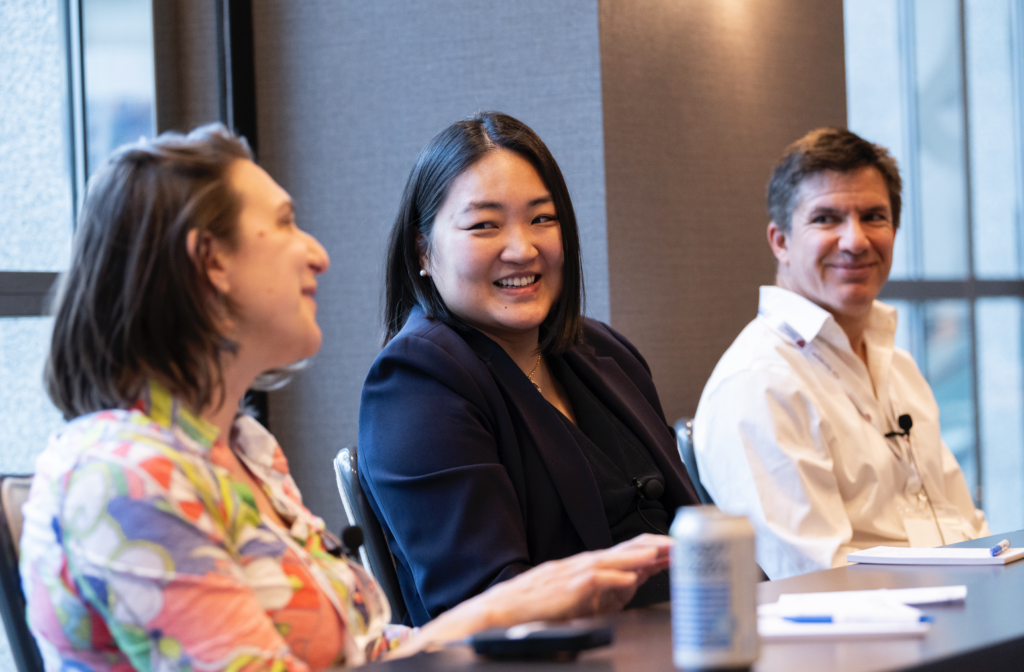
The proceedings also included a panel discussion entitled “How will cognitive science or neuroscience contribute to modern AI?” which featured SueYeon Chung, an incoming institute investigator, Talia Konkle, a Kempner associate faculty member, and Gabriel Kreiman, a Kempner affiliate faculty member. Carlos Ponce, a Kempner affiliate faculty member, moderated the panel and guided the panelists and the other attendees through a lively discussion.
Konkle described the current era as a “cross-disciplinary explosion of insight,” sharing examples of this from her own research in visual neuroscience, a field that has been revolutionized by the use of AI and machine learning techniques. In discussing the future directions for the incipient NeuroAI field, Chung brought up the importance of mechanistic insight into neural processes, a direction her lab will be pursuing when it joins the Kempner in the fall. Kreiman discussed the fact that connectivity motifs from real brains might inform the architectures of the next generation of AI models.
For the final portion of the day, attendees joined 40 Kempner poster presenters at a poster session in the venue’s vast, light-filled atrium lounge. The posters reflected the broad spectrum of research on intelligence pursued by the Kempner community, ranging from abstract theory to concrete application.
Key to the design and function of the Kempner is its ability to act as a magnet and convener for researchers at Harvard, attracting experts on everything from statistical physics and linguistics to electrophysiology and medicine. By bringing this group of innovative researchers together under one roof (quite literally at the Spring into Science event!) the Kempner is seeding unprecedented collaborations and new ideas, and growing the science of intelligence in promising directions.
Interested in learning more?
Check out some of the preprints presented at this year’s Spring into Science!
Wang, Binxu. “An Analytical Theory of Power Law Spectral Bias in the Learning Dynamics of Diffusion Models.” arXiv preprint arXiv:2503.03206 (2025).
Kumar, M. Ganesh, Blake Bordelon, Jacob A. Zavatone-Veth, and Cengiz Pehlevan. “A Model of Place Field Reorganization During Reward Maximization.” bioRxiv (2024): 2024-12.
Fish, Sara, Julia Shephard, Minkai Li, Ran I. Shorrer, and Yannai A. Gonczarowski. “EconEvals: Benchmarks and Litmus Tests for LLM Agents in Unknown Environments.” arXiv preprint arXiv:2503.18825 (2025).
Huang, Ann, Satpreet H. Singh, and Kanaka Rajan. “Measuring and Controlling Solution Degeneracy across Task-Trained Recurrent Neural Networks.” arXiv preprint arXiv:2410.03972 (2024).
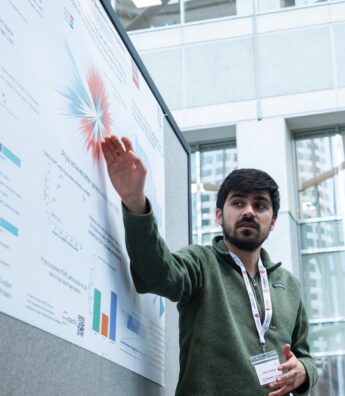
About the Kempner Institute
The Kempner Institute seeks to understand the basis of intelligence in natural and artificial systems by recruiting and training future generations of researchers to study intelligence from biological, cognitive, engineering, and computational perspectives. Its bold premise is that the fields of natural and artificial intelligence are intimately interconnected; the next generation of artificial intelligence (AI) will require the same principles that our brains use for fast, flexible natural reasoning, and understanding how our brains compute and reason can be elucidated by theories developed for AI. Join the Kempner mailing list to learn more, and to receive updates and news.
PRESS CONTACT:
Deborah Apsel Lang | (617) 495-7993






